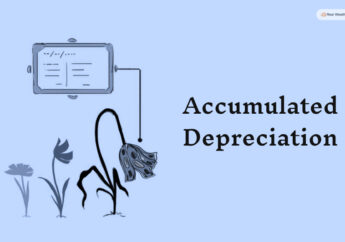Risk Management In Future And Options Trading: Strategies For Long-Term Portfolio Growth
by Abdul Aziz Mondal Finance Published on: 30 March 2024 Last Updated on: 26 September 2024

One of the finest methods to earn returns from changes in stock prices is to trade Future And Options Trading. Proper predictions may yield significant profits. However, investing in futures and options becomes extremely risky because there is no certainty whether stock prices will rise or fall in the future.
This blog will shed light on some strategies to reduce the risk associated with trading options and help you optimize your trading.
What Is Future And Option Trading?

The investor, with options, can leverage purchasing and selling the stocks at some price. This transaction can take place at any time if the contract is valid. Contrastingly, in the future contract, the purchases need to purchase the shares on some date in the future; if not, the positions of the shareholders come to a close before the date of expiry.
Futures and options are considered two different financial products that investors can use to make the right return, meaning they act as a hedge against present investments.
An investor, with both future and option trading, allows an investor to buy the investment at a particular date and time. The future options are of two types. For the new investors, the world of the future and options trading may look complex.
By pinpointing their concepts and applications, this very in-depth book shares knowledge and insights regarding financial products, and that too in an interesting way.
The dynamic nature of the stock markets woos attention for learning new skills.
However, it can be considered a growing trend, and the stakeholders are interested in this type of investment. Thus, you could say there is a lot to learn regarding the new set of skills to master in the future and in option trading.
Risks In Futures And Options
Before learning about risk management, let’s first understand the kind of risks involved in futures and options.
1. Price Risk
There is a price risk involved with derivatives like futures and options t. It is the loss resulting from changes in the market prices of the underlying assets and derivatives contracts. Futures and options are typically volatile. Hence, price risk is one of the major risks of future and options trading.
2. Liquidity Risk
Derivatives can involve liquidity risk. Liquidity risk is the risk of being unable to sell a position because there are not enough buyers or sellers. It indicates that one cannot withdraw from a position since there is insufficient volume in the derivatives contract.
3. Counterparty Risk
Counterparty risk refers to the loss when the counterparty fails to fulfill the agreement. In India, however, the Clearing Corporation of India (CCIL) safeguards the counterparty risk in futures and options.
Risk Management Techniques

Let’s now look at some risk management strategies to manage risk in futures and options trading.
Position Sizing
Position sizing refers to the process of figuring out how much money to put into a particular transaction, depending on the size of your portfolio and your risk tolerance. Proper position sizing helps prevent a substantial impact on your overall portfolio due to losses. One such strategy is the 1% Rule. It recommends never risking more than 1% of the value of your whole portfolio on a single deal, which ensures that losses are minimal.
Exit Strategies
Managing risk in Future And Options Trading requires having a clear exit strategy. This might involve defining profit target levels and putting in place stop-loss orders, which automatically terminate your trade based on predetermined criteria. By setting clear exit parameters, you may avoid making rash decisions and stay in control of volatile markets.
Diversification
Spreading your investments in different types of futures or options helps reduce the impact of market volatility. Diversification makes sure that other investments can assist in balancing possible losses in case one underperforms. This might entail using a combination of a covered call, iron condor, and other vertical spreads.
Volatility Assessment
Volatility is an indicator of how much the asset values fluctuate over a specific period. By monitoring market volatility, you can assess the degree of risk involved in your transactions. You may use this information to make the appropriate decisions depending on the prevailing conditions.
Correlation Assessment
Understanding the relationship between various asset classes and derivative contracts can help predict how they would perform in different market conditions. By building a portfolio of assets with very little or no negative correlation, you can protect your portfolio and lower the total risk exposure.
Stress-Test Scenarios
Stress testing helps you determine the possible impact on your portfolio and its resilience to economic shocks. It simulates scenarios of extreme market conditions. You may find weaknesses in your trading strategy and improve your risk management methods by regularly carrying out stress tests. This shall safeguard your investments.
Balancing Risks For Long-Term Growth

Finding the ideal ratio of reward to risk is crucial for minimizing risk in futures and options trading. The following are some tips you may follow.
1. Set Realistic Expectations
Refrain from setting irrational returns that could lead to unwarranted risk exposure. Instead, concentrate on obtaining steady returns in the long term.
2. Regularly Reevaluate Portfolio Performance
Review your portfolio regularly to ensure it meets your risk tolerance and investment objectives. Make the appropriate modifications to maintain an ideal risk-reward ratio.
3. Stay Informed
Stay updated on trends and modify your strategy. It will help you make smarter decisions and improve your ability to manage the risks associated with unforeseen market developments.
Conclusion
One should be proficient in risk management to protect assets, seek steady returns, and guarantee long-term success.
By being aware of the risks associated with futures and options trading and using solid risk management strategies, you may achieve the best possible balance between risk and return.
Excellent platforms such as Kotak Securities enable you to properly employ these risk management techniques. You can open a Demat and trading account and access various useful tools to streamline the process. The platform provides efficient trade management systems to trade derivatives effectively.
Read Also:








































































































All Comments
Glycogen Review
Thank you for your response! If you have any specific questions, topics, or areas of interest you'd like to discuss, feel free to share them. Whether it's about technology, science, literature, or any other subject, I'm here to provide information and assistance. Just let me know how I can help you further, and I'll do my best to assist you!